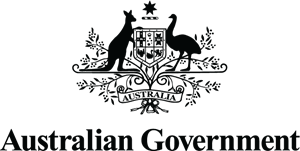For industry
Transitioning to a determination
Learn how to transition to an updated or new determination

Overview
Determinations are made to support minimum energy performance standards (MEPS), labelling requirements for products and to specify a commencement date under the Greenhouse and Energy Minimum Standards Act 2012 (Act).
Setting a commencement date allows suppliers to prepare or transition to the new requirements before the determination commences.
Determinations can be found on the Federal Register of Legislation.
Making determinations and commencement
Determinations undergo an iterative process that can take years to complete before they are made and commence. Steps in the process:
- consider if we should regulate a product by researching how products are bought and sold, international and overseas standards and regulations, and industry and market developments
- publicly consult on our findings through a consultation regulatory impact statement document. Once the consultation period closes, we analysis comments and submissions
- revise our understanding and prepare a decision regulatory impact statement document for Energy Ministers
- if approved by the Energy and Climate Change Ministerial Council, prepare to update or develop a new product determination with explanatory statement
- if approved by the Federal Minister, register the determination on the Federal Register of Legislation
- commence on a date specified in the determination. If there is an existing determination for a product it is repealed the day before the new determination commences.
While determinations are registered on the Federal Register of Legislation, they don’t commence until the date specified in the determination for existing or new products. Determinations generally commence 12 months after the determination is registered. Occasionally, they commence on the same day they are registered. Some may even commence before 12 months or later, but this is rare.

Working towards the commencement date
The Greenhouse and Energy Minimum Standards (GEMS) Regulator:
- releases an updated or new registration form for the product in the Energy Rating Product Registration System
- releases an updated or new data set for registered product models in the Energy Rating Registration Database
- provides information about the determination and what stakeholders can expect, this includes registration and compliance.
Suppliers have a responsibility to understand their obligations and comply with the legislation whether it is for a product that is regulated for the first time or a determination that has been updated. Leading up to the determination commencement date suppliers should prepare to:
- register in scope product models
- sell existing products under the Act’s grandfathering provisions and the product’s determination before they can no longer be sold in Australia.

Preparing to register product models
-
In scope models
Register new in scope models on or before the commencement date. Once a determination commences, you cannot supply, or offer for supply any models that are regulated by a determination, unless the:
- product is second hand
- model of the product is exempt from registration under section 30 of the Act (apply for exemption)
- product meets grandfathering provisions under the Act. If grandfathering provisions apply, existing stock that has been imported into or manufactured in Australia, and is compliant under the determination, can be supplied without the need to test or register the model.
Existing in scope models that are registered to the old determination and meet the new determination requirements will continue to be registered until their registration expiry date, even if that falls after the new determination’s commencement date. In this case, the model’s registration is automatically upgraded to the new determination and your registration expiry date remains the same.
If your registered existing in scope model registration expires before the new determination’s commencement date, you can choose to register in scope models to the new or old determination. If registering to the new determination the model’s registration period covers the time before the determination’s commencement date.
-
Out of scope models
A determination must specify whether new models or existing registered models are affected and fail to comply with the new determination under the Act.
If existing model registrations are listed as affected registrations in the determination, they will expire on the determination’s commencement date. This means you can’t offer to supply these models within Australia unless grandfathering provisions apply.
Additionally, if the determination does not regulate your specific product model (new or existing), you can continue to sell the products without registering them.
-
When to register
The earlier your application is lodged, the sooner the GEMS Regulator can assess it. This minimises the amount of time you may wait before you can offer your product for supply or sale after the commencement date.
If you lodge an application a day before the determination’s commencement date, you may not be able to offer the product for supply until your registration is approved, which can take up to two weeks or more if assessors require you to supply further information to support your application. This is because assessors may require additional information.
Preparing to sell existing stock and grandfathering provisions
-
Grandfathering provisions made simple
Grandfathering provisions provide special rules for products that have been imported into or manufactured in Australia before the commencement date.
This means affected products can be sold or used for commercial purposes, without being registered against the determination or complying with the updated requirements.
The grandfathering provisions are set out in sections 16(2)(c), 17(2)(c), 18(2)(d) and 19(2)(d) of the Act.
If grandfathering provisions are satisfied, a product imported into, or manufactured in Australia before a new determination commences may continue:
- to be supplied
- offered for supply, or
- used for a commercial purpose, without complying with or being registered against the new determination.;
These products can then be supplied or used either indefinitely, or for a ‘limited grandfathering period’ under section 31 of the Act. Under limited grandfathering, a product cannot be supplied, offered for supply or used for a commercial purpose after the end of the specified period.
-
Stock imported into or manufactured in Australia
Stock that was imported into or manufactured in Australia before the new determination’s commencement date may be offered for supply until stock is exhausted. This includes stock in transit or on the conveyor belt.
This assumes grandfathering provisions are satisfied under the Act and determination. Grandfathering provisions and limited grandfathering periods may apply from the determination’s commencement date.
Stock that was imported into or manufactured in Australia after the new determination’s commencement date must not be offered for supply or sale until the model is registered to the new determination.
-
Having stock issues
If you have products that are not registered, in transit or part way through the manufacturing process, you need to email the compliance team:compliance@gems.gov.au and provide documents that show:
- when the product was ordered
- expected time of arrival
- why the product didn’t arrive on time.
The team will advise you what to do next.
Compliance and you
When considering non-compliance, the team reviews the supplier’s registration history, behaviours, motivations and intentions to determine an appropriate response.
Where suppliers are clearly attempting to comply with the requirements but failing, we provide education and support to help them meet their obligations.
Where there is an obvious, deliberate failure to comply, there are a range of response options.
Learn about our Compliance approach, Compliance Monitoring Program and Enforcement.
Learn how to Report non-compliance.


